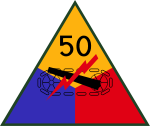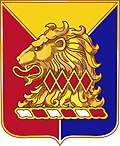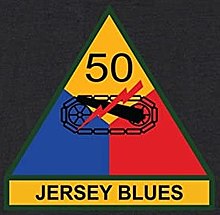
The 36th Infantry Division ("Arrowhead") also known as the "Panther Division", the "Lone Star Division", "The Texas Army", and the "T-patchers", is an infantry division of the U.S. Army and part of the Texas Army National Guard. The 36th Infantry Division was organized during World War I (1914–1918) from units of the Texas National Guard and of the Oklahoma National Guard. As an all-Texas unit, the Arrowhead Division was called to service for World War II (1937–1945) on 25 November 1940, was deployed to the European Theater of Operations in April 1943, and returned to the Texas Army National Guard in December 1945.

The 1st Cavalry Division is a combined arms division and is one of the most decorated combat divisions of the United States Army. It is based at Fort Cavazos, Texas. It was formed in 1921 and served during World War II, the Korean War, the Vietnam War, the Persian Gulf War, with the Stabilization Force in Bosnia-Herzegovina, in the Iraq War, in the War in Afghanistan as well as Operation Freedom's Sentinel and Operation Inherent Resolve. As of July 2023, the 1st Cavalry Division is subordinate to III Armored Corps and is commanded by Major General Kevin D. Admiral.
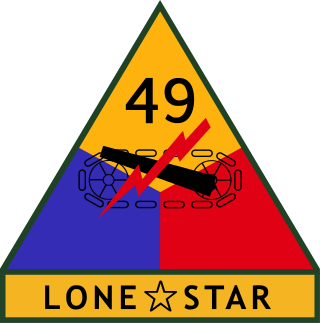
The 49th Armored Division —nicknamed the "Lone Star"— was an armored division of the Texas Army National Guard during the Cold War.

The 29th Infantry Division, also known as the "Blue and Gray Division", is an infantry division of the United States Army based at Fort Belvoir in Fairfax County, Virginia. The division is currently a formation of the Army National Guard and includes units from Virginia, Maryland, Kentucky, North Carolina, South Carolina, and West Virginia.

The 42nd Infantry Division (42ID) ("Rainbow") is a division of the United States Army National Guard. It was nicknamed the Rainbow Division because, during rapid mobilization for service in WW1, it was formed from 27 National Guard units from across the US. The division was engaged in four major operations between July 1918 and the armistice in November 1918, and demobilized in 1919. Since World War I, the 42nd Infantry Division has served in World War II and the Global War on Terrorism (GWOT).

The 9th Infantry Division is an inactive infantry division of the United States Army. It was formed as the 9th Division during World War I, but never deployed overseas. In later years it was an important unit of the U.S. Army during World War II and the Vietnam War. It was also activated as a peacetime readiness unit from 1947 to 1962 at Fort Dix, New Jersey, and Fort Carson, Colorado, and from 1972 to 1991 as an active-duty infantry division at Fort Lewis, Washington. The division was inactivated in December 1991.

The 28th Infantry Division ("Keystone") is a unit of the Army National Guard and is the oldest division-sized unit in the Department of Defense. Some of the units of the division can trace their lineage to Benjamin Franklin's battalion, The Pennsylvania Associators (1747–1777). The division was officially established in 1879 and was later redesignated as the 28th Division in 1917, after the entry of America into the First World War. It is today part of the Pennsylvania Army National Guard, Maryland Army National Guard, Ohio Army National Guard, and New Jersey Army National Guard.

The New Jersey Army National Guard consists of more than 6,000 Citizen-Soldiers. The New Jersey Army National Guard is currently engaged in multiple worldwide and homeland missions. Units have deployed to Iraq, Guantanamo Bay, Afghanistan, Germany, Kosovo, Kuwait, Qatar, Bahrain, and Egypt. The Guard has also deployed to help with the recovery from Hurricane Irma in Texas and the U.S. Virgin Islands, Hurricane Maria in Florida and Puerto Rico, and Hurricane Katrina in New Orleans.
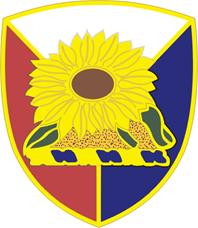
The Kansas Army National Guard is a component of the Army National Guard and the Kansas National Guard. Kansas Army National Guard units are trained and equipped as part of the United States Army. The same ranks and insignia are used and National Guardsmen are eligible to receive all United States military awards. The Kansas Guard also bestows a number of state awards for local services rendered in or to the state of Kansas. It is, along with the Kansas Air National Guard, an element of the Kansas National Guard.
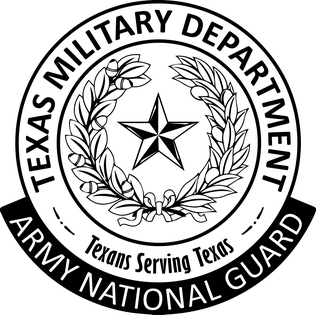
The Texas Army National Guard is a component of the United States Army, the United States National Guard and the Texas Military Forces.

The 150th Aviation Regiment is a regiment of the United States Army National Guard organized under the United States Army Regimental System. It was constituted 1 October 1987 in the New Jersey, Vermont and Delaware Army National Guard as the 150th Aviation, a parent regiment under the United States Army Regimental System. It was organized to consist of 1st Battalion at Trenton Airport, New Jersey, Company D at Burlington Airport, Vermont; Company E at New Castle Air National Guard Base, Delaware and Company F at Dover, New Jersey, all elements of the 50th Armored Division.
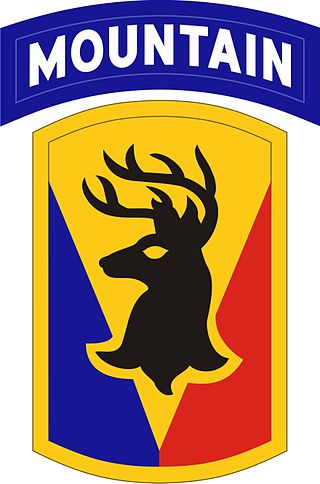
The 86th Infantry Brigade Combat Team (Mountain) ("The Vermont Brigade") is an Army National Guard light infantry brigade headquartered in Vermont. It was reorganized from an armored brigade into an Infantry Brigade Combat Team (IBCT) as part of the United States Army's transformation for the 21st century. The 86th IBCT utilizes the Army Mountain Warfare School, co-located at Ethan Allen Firing Range in Jericho, Vermont, to train in individual military mountaineering skills so the entire brigade can be skilled in such warfare. This large conventional unit level mountain warfare capability had been lost when the 10th Mountain Division deactivated after World War II. This left the 86th IBCT as the only mountain warfare unit in the U.S. military whose soldiers were trained in mountain warfare, with individual soldiers being graduates of Ranger School, the Special Forces Advanced Mountain Operations School, and the Army Mountain Warfare School instead of entire units that specialized in such tactics. "The Vermont Brigade" configured itself to be such a unit.

The 50th Infantry Brigade Combat Team was an infantry brigade combat team of the United States Army National Guard of New Jersey. It was headquartered at the Lawrenceville Armory.

The 86th Field Artillery Regiment is a inactive parent field artillery regiment of the United States Army, last represented in the Vermont Army National Guard by the 1st Battalion, 86th Field Artillery Regiment. Perpetuating the Vermont Light Artillery Batteries of the American Civil War and subsequent Vermont artillery units, the regiment was organized following World War II as the 206th Field Artillery Battalion in the Vermont National Guard. The 206th saw active service in Germany with the 43rd Infantry Division during the Korean War, and became the 124th Artillery, a Combat Arms Regimental System parent regiment, in 1959. Represented by the 1st Howitzer Battalion, 124th Artillery, the regiment was renumbered as the 86th Artillery in 1964 when the 1st Battalion became the brigade artillery battalion of the 86th Armored Brigade. The 1st Battalion served in that role with the brigade for much of the rest of its existence.

The 102nd Cavalry Regiment is a regiment of the United States Army first established in 1913 and which saw service in World War II.
The Central Army Group (CENTAG) was a NATO military formation comprising four Army Corps from two NATO member nations comprising troops from Canada, West Germany and the United States. During the Cold War, CENTAG was NATO's forward defence in the southern half of the Federal Republic of Germany (FRG). The northern half of the FRG was defended by the four Army Corps of NATO's Northern Army Group (NORTHAG). During wartime, CENTAG would command four frontline corps. Air support was provided by Fourth Allied Tactical Air Force.

The 27th Armored Division was a United States Army formation. It was part of the New York Army National Guard in the 1950s and 1960s.

The 44th Infantry Brigade Combat Team is an infantry brigade combat team of the New Jersey National Guard. It is headquartered at the Lawrenceville Armory in Lawrenceville, New Jersey, United States. The 44th Brigade Combat Team is the major unit of the New Jersey Army National Guard. The 44th Brigade Combat Team has three light infantry battalions, one field artillery battalion, one cavalry squadron, an engineer battalion, and a support battalion.
